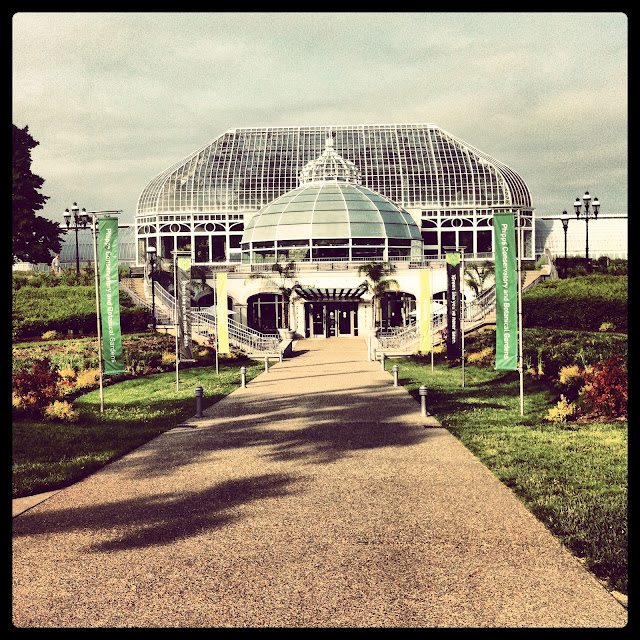
I was lucky enough to be invited to a press tour of the new CSL building at the Phipps Conservatory and Botanical Gardens here in Pittsburgh this week.
There’ll be pictures and a more in depth post this week but for now, here’s the press release.
Pittsburgh, Pa.—Opening on May 23, 2012 at Phipps Conservatory and Botanical Gardens, the new 24,350-square-foot Center for Sustainable Landscapes (CSL) will emerge as one of the greenest buildings on Earth. Seeking to achieve or exceed the world’s highest sustainable standards, including theLiving Building Challenge , LEED® Platinum and Sustainable Sites Initiative™ (SITES) certification for landscapes, it will also be the largest operational structure pursuing living building status in the U.S. when it opens.
Constructed with local talent and mostly U.S.-made materials, the CSL—home base for environmental education and research—aims to achieve net-zero energy consumption with solar photovoltaics, geothermal wells and a vertical axis wind turbine, as well as passive cooling, heating and lighting methods.
It will also save resources by treating and reusing all water captured on site. Additionally, the CSL will interact with its environs as a vital part of daily operation, blurring the lines between the natural and built environments. And, as a global SITES™ pilot project, it will feature a restorative landscape with native plants and a demonstration green roof garden.
Other site features include a lagoon, water distillation system, rain gardens, and constructed wetlands. “Designed and built by Pittsburghers and Pennsylvanians as an innovation for the world, the CSL will serve as a model for how we can all work together with nature to make our communities healthier, safer and more supportive of life,” says Phipps’ Executive Director Richard V. Piacentini. “It will also give visitors the opportunity to see just how beautiful and practical green can be.” A leader in green building and operations, Phipps has also constructed the first LEED® visitor centerin a public garden—complete with a 3-star Green Restaurant Certified® café—and the world’s most energy-efficient tropical forest conservatory when it opened in 2006.

 Make Money Online Using Publish Us
Make Money Online Using Publish Us


